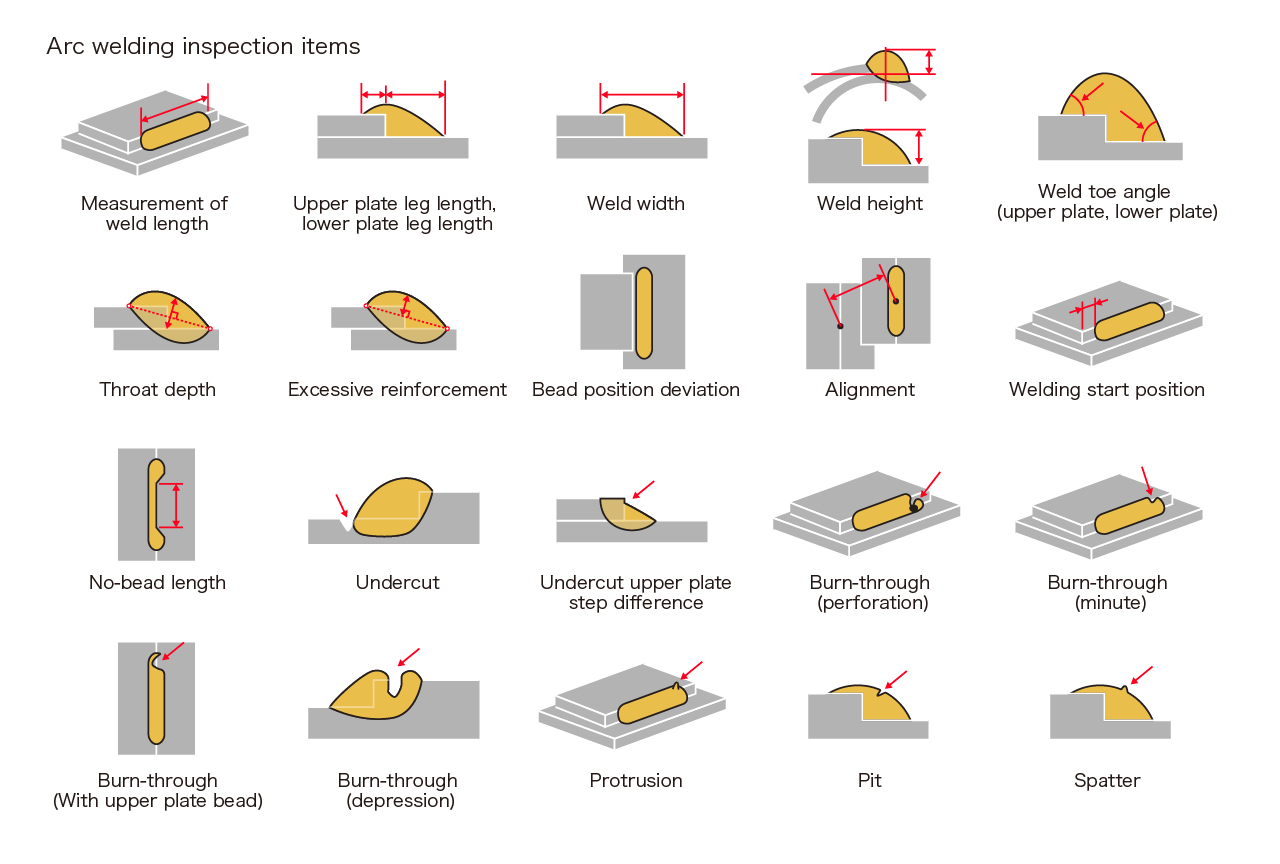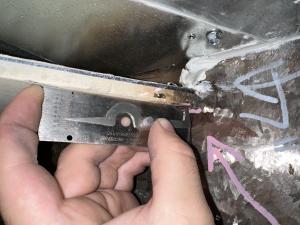Discovering the Significance of Welding Inspection in Industrial Applications: Protecting Against Failures and Enhancing Longevity
Welding examination works as an essential line of defense in commercial applications, ensuring the architectural honesty and dependability of bonded components. By methodically determining defects such as porosity and incomplete blend, examinations not only prevent failures but also extend the life expectancy of essential possessions. Abiding by industry requirements improves both safety and security and operational effectiveness; nonetheless, the effects of ignoring these techniques can be severe. As we take a look at the complex benefits of regular assessments, it comes to be evident that recognizing these characteristics is not merely an issue of conformity but a calculated crucial for durability and danger mitigation.
Role of Welding Assessment
Welding assessment works as an essential guard in industrial applications, making certain that bonded frameworks satisfy defined standards of top quality and security. This process entails a methodical assessment of welds to confirm their integrity, stamina, and conformity with recognized codes and requirements. The role of welding examination is diverse, incorporating both visual evaluations and non-destructive screening methods, which might consist of ultrasonic, radiographic, or magnetic fragment screening.
Efficient welding examination identifies potential problems early, minimizing the danger of devastating failings that can emerge from poor welds. By making sure that welds are carried out according to develop specifications, examiners contribute to the general architectural integrity and long life of components in important applications, such as pressure vessels, pipelines, and architectural frameworks.

Usual Welding Issues

Among one of the most common flaws is porosity, identified by small gas pockets caught within the weld metal. This takes place as a result of impurities or incorrect protecting gas, compromising the weld's toughness. An additional significant issue is insufficient blend, where the weld steel fails to bond effectively with the base product, potentially leading to structural weak points.

Splits can likewise establish throughout or after the welding procedure, commonly connected to thermal stresses or inappropriate cooling prices. Additionally, damaging, where the base metal is deteriorated along the weld bead, can deteriorate the joint and is typically brought on by extreme heat input or inaccurate technique.
Furthermore, absence of infiltration happens when the weld metal does not reach the origin of the joint, resulting in inadequate strength. Comprehending these usual issues is vital for welders and assessors alike to ensure that welded frameworks fulfill safety and efficiency standards, eventually protecting against potential failures in commercial applications.
Benefits of Normal Evaluations
Normal inspections offer as a vital guard in guaranteeing the dependability and durability of welded structures. These assessments recognize possible defects and weaknesses that may jeopardize the honesty of welds, permitting prompt remediation before concerns rise. By carrying out an organized examination regimen, companies can substantially lower the danger of tragic failures that might lead to pricey downtime, devices replacement, or even mishaps.
In addition, regular assessments add to boosted quality assurance throughout the welding procedure. By sticking to a constant examination timetable, business can guarantee that their welding techniques fulfill established quality standards and ideal techniques. This not just fosters a society of accountability yet additionally urges constant enhancement among welding employees.
Additionally, regular evaluations help with better upkeep preparation. By determining wear and tear early, companies can strategically set up replacements and fixings, decreasing disturbance to operations. This aggressive method ultimately brings about extensive possession lifespan and boosted general productivity.
Last but not least, a commitment to regular assessments can enhance a firm's online reputation in the sector. Stakeholders and clients progressively value organizations that focus on safety and top quality, thereby boosting trust and possibly resulting in raised business chances.
Sector Specifications and Regulations
Sticking to industry criteria and guidelines is a basic aspect of welding examination that complements the advantages of normal evaluations. These requirements, developed by companies such as the American Welding Culture (AWS) and the American Society of Mechanical Designers (ASME), supply a structure for best practices in welding processes, materials, and inspection methods. Conformity with these regulations guarantees that welds satisfy the called for high quality and security standards, considerably minimizing the threat of architectural failings.
Governing bodies like the Occupational Safety and Wellness Management (OSHA) better enforce guidelines that safeguard workers and the environment during welding operations. By following these established requirements, markets can improve the dependability of useful content their components and structures, ensuring they carry out as intended under different functional conditions.
Furthermore, adherence to market standards fosters consistency in top quality control, facilitating smoother interaction amongst stakeholders and regulative companies. This positioning not only minimizes responsibility threats yet additionally improves the integrity of companies in competitive markets. Welding Inspection Gilbert Arizona. Ultimately, conformity with welding requirements and policies is not merely a lawful responsibility; it is an important investment in safety and security, performance, and long-term functional success
Future Trends in Welding Assessment
As industries continue to evolve, the future of welding examination is positioned to integrate innovative innovations that enhance precision and performance. Among the most substantial patterns is the adoption of automation and robotics in assessment processes. Automated systems can perform evaluations swiftly, minimizing human error and raising throughput in manufacturing settings.
Furthermore, the assimilation of expert system (AI) and artificial intelligence algorithms will certainly allow anticipating analytics, permitting real-time analyses and proactive upkeep. By analyzing data from previous examinations, these technologies can determine patterns that could suggest potential failures, consequently expanding the lifespan of bonded parts.
Additionally, non-destructive testing (NDT) strategies are anticipated to end up being a lot more advanced, using tools such as drones and self-governing automobiles equipped with sophisticated sensing units. Welding Inspection Gilbert Arizona. These innovations will enhance the capacity to inspect dangerous or hard-to-reach locations without jeopardizing security
Moreover, the fad in the direction of digitalization will cause boosted information management systems that help with much better tracking, reporting, and compliance with market criteria. In recap, the future of welding examination is characterized by technical advancements that promise to considerably improve reliability, safety and security, and functional performance in numerous commercial applications.
Verdict
Finally, welding examination offers a crucial feature in making sure the stability and longevity of bonded structures across various commercial applications. By recognizing flaws such as porosity and incomplete blend, routine assessments play a considerable role in threat reduction and quality control. Adherence to sector criteria and laws better improves pop over here functional safety and dependability. As developments in modern technology remain to advance, the future of welding assessment guarantees increased precision and effectiveness, ultimately adding to the durability of vital facilities.
Welding assessment offers as an important line of protection in commercial applications, ensuring the structural honesty and reliability of welded parts.Welding inspection serves as an essential protect in industrial applications, ensuring that welded structures satisfy defined requirements of high quality and safety and security. Ultimately, the role of welding examination is essential in advertising safety and security, boosting performance, and safeguarding investments in commercial framework.
These standards, developed by companies such as the American Welding Culture (AWS) and the American Culture of Mechanical Designers (ASME), provide a framework for best practices in welding processes, materials, and evaluation methods.In verdict, welding examination offers an essential feature in ensuring the integrity and sturdiness of welded structures across have a peek here different industrial applications.